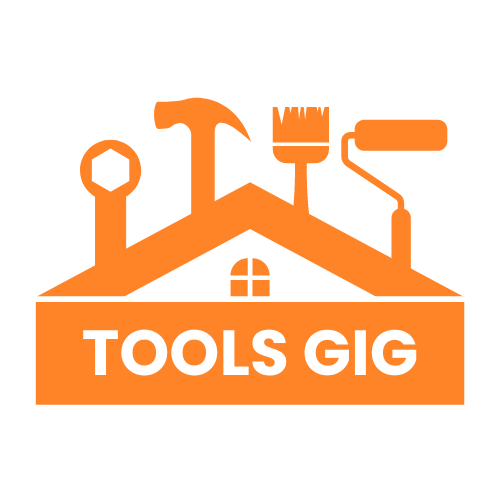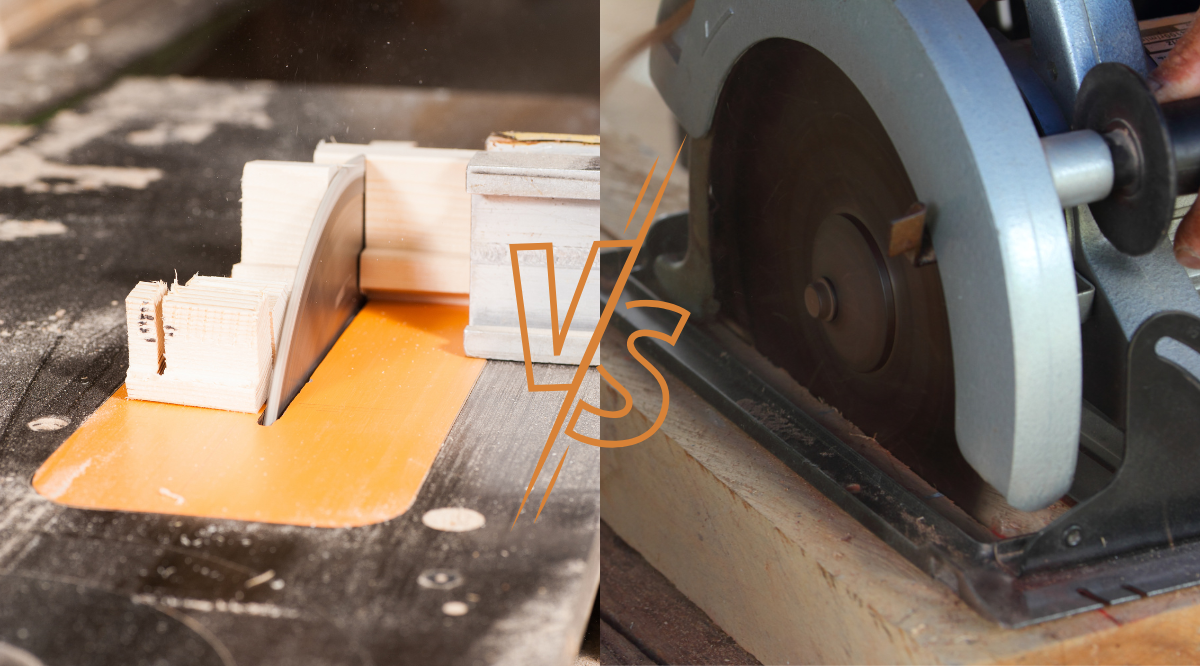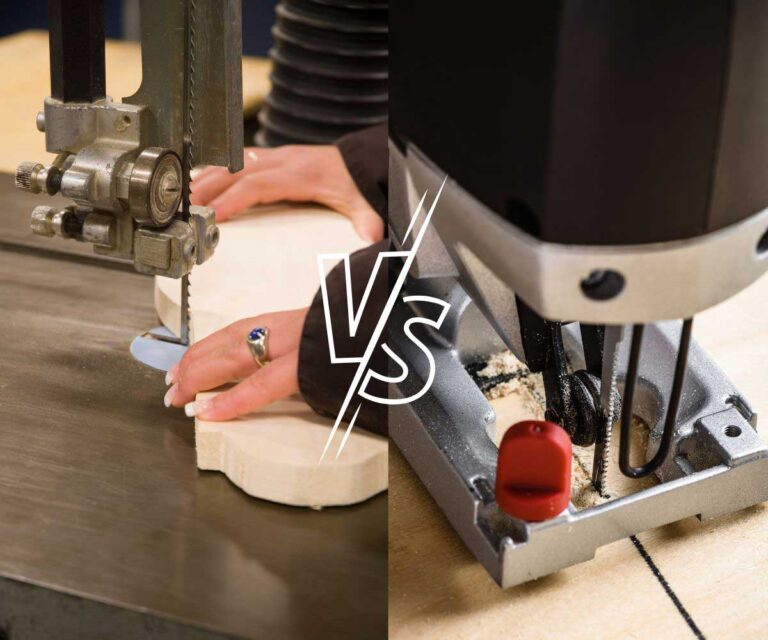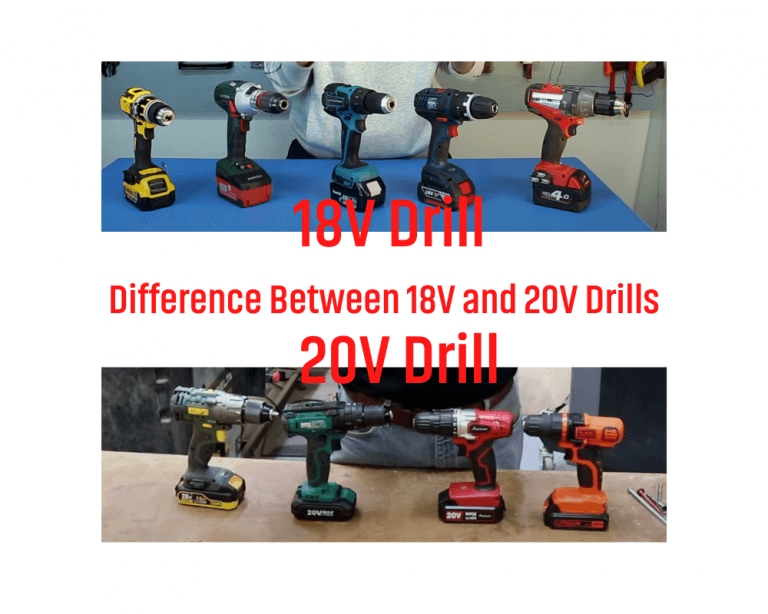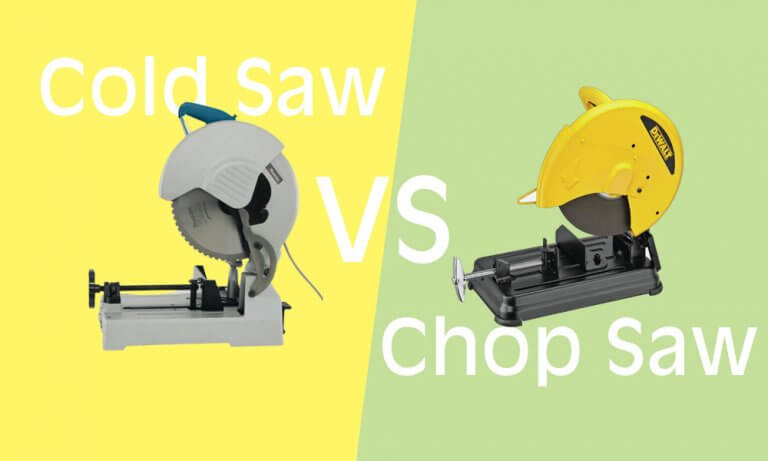Track saw vs Table saw – Let’s clear the confusion!
As an Amazon Associate I earn from qualifying purchases.
A track saw and a table saw are both cutting tools that slice wood, plywood, and particleboard.
A track saw is a lightweight, small-size portable saw that makes wider plywood cuts, extra-long cuts, and splinter-free edge cuts with great accuracy and safety and even costs less.
In contrast, a table saw is more powerful and typically stationary, which makes repeatable rip cuts and dadoes cut better with much deeper and narrower cuts.
Like in some cases, one has more advantages and disadvantages in usage and features. So, let’s elaborately compare and give you a clear idea between Track saw vs Table saw so that you can choose one of them according to their type of work.
Contents
Comparison Table between Table saw vs Track saw
| Features | Table Saw | Track Saw |
| Speed | Faster | Fast |
| Blade type | Ripping, combination, and cross-cutting blades | Circular saw blades |
| Main purpose | Repeatable rip cuts | Extra-long cuts |
| Power supply | Corded | Corded and cordless |
| Cut quality | Smooth | Smooth |
| Cuts | On the table | On the board |
| Repeatable rip cuts | Yes | No |
| Wider plywood cuts | No | Yes |
| Curve cut | On all models | Yes |
| Straight cut | Better | Better |
| Deep cut | Deeper | Less deep |
| Narrow cuts | Better | Average |
| Changing blades | Little tough | Easy |
| Weight | More | Less |
| Safety | Safe | Much safer |
| Maintenance | Tough | Easy |
| Portable | No | Yes |
| Space | Take more | Take less |
| Price | More costly | Costly |
Pros and cons comparison between Track saw and Table saw
Track Saw
A track saw is a small portable circular saw compared to a table saw to work on job sides and small workshops. It can slice wider, extra-long sheets with excellent straight, bevel, ripping, and angled cuts.
It requires no clamps for quick and easy setup and is available in both corded and cordless versions, depending on your needs.
Table saw
A table saw is a large, powerful saw designed to handle almost every woodworking project. It can make deeper cuts and even narrower cuts while maintaining consistent rip cuts of the same size.
Difference between Track saw vs Table saw
Power
A table saw is more powerful than a table saw and spins the blade faster than a track saw to cut hard and soft wood quickly.
Blade
Both the table saw and track saw use round blades that rotate anticlockwise, but the designs of their blades are different. For example, a tablesaw uses ripping, combination, and cross-cutting blades. In contrast, a track saw uses circular saw blades.
Blade size
A track saw mostly uses a 6.5-inch diameter blade, whereas a table saw mostly uses a 10-inch diameter blade to cut materials. You can also use small and large saw blades in both saws to make the desired cuts.
Blade height adjustment
Both on a table saw and track saw, you can adjust the height by raising and lowering the blade to have different depths of cut.
Bevel adjustment
A track saw blade can be adjusted at different angles to have up to 45 degrees of bevel cuts. In contrast, some table saw models include angle adjustment features for bevel cuts.
Blade change
Changing the blade on a track saw is much easier and safer than on a table saw. A track saw blade can be changed by just unscrewing it from the outside. In contrast, changing the table saw blade requires two wrenches and loosening the arbor within the side of the blade gap.
Cuts
Technically, both saws can easily make rip, bevel, miter, plunge, and crosscuts. However, each has its own signature cut, such as a table saw with repeatable rip cuts and dadoes cuts better. In contrast, a track saw can do long bevel cuts, cutting trim, and cross cuts more efficiently than a table saw.
Deeper cuts
A table saw will make deeper cuts than a track saw, as a table saw uses larger blades. On a 90-degree setting, a table saw can be up to 4 inches deep. In contrast, in a 90-degree setting, a track saw can cut up to 2 to 3 inches deep.
Vacuum port
You will get a vacuum port in all track saws to collect dust to keep your place clean. In contrast, not every tablesaw comes with dust collection features.
Note: you can install an external dust collection vacuum port to keep your workplace clean while cutting.
Track
A table comes with a fence that slides forth and back to adjust the width of the cut. In contrast, a track saw uses a track guide rail that lies on the material surface and controls the cutting path.
Kick back
Both saw blades rotate anticlockwise, cut in the up-stroke direction, and while cutting the blade tooth, pull the board upside down or kick it back. To avoid this, a track saw uses a track guide rail, and a table saw uses a riving knife to avoid kickback of the board.
Note: As the track saw uses both the track guide rail and raving knife, you will get more stable cuts.
Safety
A track saw is a safer saw than a table saw. Though a table saw comes with a blade guard, its blade mostly remains naked while driving material toward the blade. On the other hand, a track saw has a handle on top and requires you to sit on the track guide rail to cut.
Note: You can make a table saw safer using a push stick to push the board toward the blade.
Storage and Portability
A table saw is much heavier and larger than a track saw, making it difficult to move and taking up a lot of space in your workshop.
In contrast, a track saw is small and lightweight. Though the track guide rail is long, it only takes up a little space and is easily carryable.
Price
To buy any of these saws, you have to keep a rich amount of money in your pocket. For example, a track saw comes in a range of $100 to $1000. In contrast, a table saw comes in a range of $150 to $5000.
But if you spend around $300 to $500, you will get a quality track saw and table saw.
Which One should I choose: Track saw or Table saw!
A saw should be chosen depending on your working purpose, cutting capability, cuts, portability, and price.
As for my usage of both these saws, a table saw is a good option to choose if you do cut in your workshop, need a powerful saw that can do repeated rips cuts without aligning the guide after every cut, and need to cut deep and narrow wood and plywood.
A track saw, on the other hand, is a good option to choose if you need portability, quick and easy setup, don’t have much space in the workshop, need to make extra-long and wider cuts with great accuracy, and don’t have a huge budget like a table saw.
Even a track saw can be used instead of a table saw and replaced, as it can do almost all the cuts and save space in your workshop.
Frequently Asked Questions
Why does my table saw leave burn marks?
A table saw is a powerful machine that spins the blade very fast, which generates excessive heat that burns and causes burn marks.
When cutting thicker wood, it comes into contact with the table saw blade for a short period of time, during which time the table saw generates excessive heat and leaves burn marks on the board.
Can any saw be used as a track saw?
Not every saw can be used as a track saw except a circular saw. A circular saw’s structure, cuts, and features are almost the same as a track saw except for the blade, which is smaller than a track saw blade.
So, at a certain moment, if you don’t have a track saw, you can use a circular saw instead of a track saw.
How do track saws stay in place?
A track saw uses an aluminum track guide rail with rubber grip strips on the bottom that reduce vibration, prevent slipperiness, and keep the track saw in place while cutting.
Even you can use a track saw without a track to cut small boards or small rip cuts. However, you will not get the desired straight result without a track, even with long and wide cuts.
How do you cut a narrow board with a track saw?
To cut a narrow board, use scrap wood underneath the board you are cutting. The scrap wood will hold the track at the same level, and without tipping the track, you can easily cut a narrow board.
Conclusion
Depending on the working purpose, cuts, and price, I compared all the aspects and provided similarities and dissimilarities between the track saw and table saw.
Both the track saw and table saw cost a rich amount of money, and one can’t buy it on a regular basis. So, you compare and choose one of them with great caution. Thank you.
